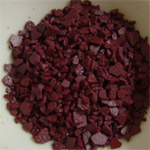
Pollutants in Drinking Water Page 2
 Fluoride: It sounds ironic that fluoride is an unwanted water contaminant when it is the staple ingredient in so many kinds of toothpaste. In the right quantities, it may reduce and prevent tooth decay. However fluoride is highly toxic and in larger quantities can cause dental fluorosis, poisoning, and even death. Fluoride is also a suspected carcinogen so you definitely do not want to drink water that is fluoridated.
Fluoride: It sounds ironic that fluoride is an unwanted water contaminant when it is the staple ingredient in so many kinds of toothpaste. In the right quantities, it may reduce and prevent tooth decay. However fluoride is highly toxic and in larger quantities can cause dental fluorosis, poisoning, and even death. Fluoride is also a suspected carcinogen so you definitely do not want to drink water that is fluoridated.
Since in the United States water and processed beverages provide 75% of fluoride intake, the best way to prevent fluorosis is by checking the concentration of fluoride in your drinking water (which shouldn't be higher than 0.7 mg/L).
 Chromium: In 2010 the Environmental Working Group (EWP) found excessive levels of chromium 6, a carcinogen, in the water supply of 31 U.S. cities. Exposure to chromium 6 causes a long list of terrible conditions like stomach cancer, kidney failure, renal and liver failure, premature dementia and allergic contact dermatitis.
Chromium: In 2010 the Environmental Working Group (EWP) found excessive levels of chromium 6, a carcinogen, in the water supply of 31 U.S. cities. Exposure to chromium 6 causes a long list of terrible conditions like stomach cancer, kidney failure, renal and liver failure, premature dementia and allergic contact dermatitis.
Chromates are often used to make leather goods, mortar and paints, and they leach from these industrial processes into groundwater and soil, eventually ending up in our water.
Rebecca Sutton, a senior scientist with the EWP, says the best way to protect yourself is to buy an effective water filter since bottled water is not necessarily safer than tap water.
 Lead: By now we all know the consequences of lead poisoning. The heavy metal is toxic to children since it interferes with the development of the nervous system and can cause anemia, seizures and even death.
Lead: By now we all know the consequences of lead poisoning. The heavy metal is toxic to children since it interferes with the development of the nervous system and can cause anemia, seizures and even death.
Lead gets into the water via water pipes, and even copper pipes may be soldered with lead. While lead was banned from water pipes in 1986, pipes made today still contain some lead.
Test for lead in your water by calling your local health department for free testing. Lead levels shouldn't exceed 0.01 mg/L.
The Solution= Home Water Filtration
What can you do? Both in terms of efficiency and economy, a quality water filter will improve the taste and odor of your water while removing many harmful contaminants.
A reverse osmosis filter reduces chemical quantities and most pollutants, including heavy metals like lead, fluoride, chromium, and arsenic. In addition, a reverse osmosis filter will also remove nuclear radiation like plutonium as well as microbial contaminants such as bacteria and viruses. When combined with activated carbon filtration, a reverse osmosis system is the best technology available for keeping you and your family safe from toxic drinking water contamination.

